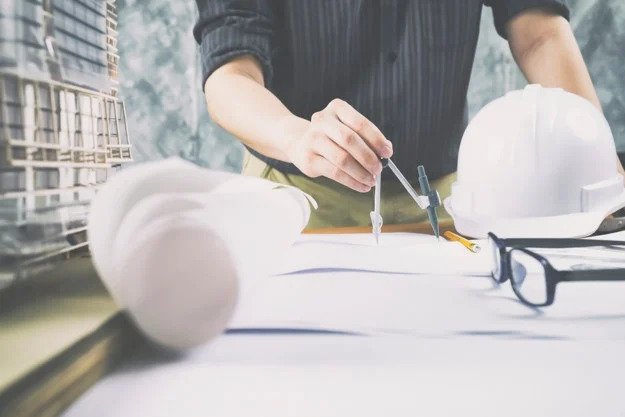Have you been looking to find an accredited NABERS assessor to rate your building?
There are over 435 NABERS accredited assessors at the time of writing, which equates to a lot of choices when it comes to choosing a NABERS assessor to rate your building.
Each assessor is trained and certified to follow the NABERS rules for rating a building, so the reality is that any two independent assessors should arrive at the same star rating for a building.
However, there are some key things you should look out for in selecting a NABERS assessor to make the process go as smoothy as possible, and in some cases, this can even make a big difference in your final NABERS star rating.
1. Active Accredited Status
First and foremost, your assessor should hold a current accreditation by NABERS.
You can look up accredited assessors in the NABERS Find an Acredited Assessor register.
Persons listed in this register have undergone specific training in the NABERS rating tools and understand how to perform assessments based on the NABERS guidelines.

Be sure to check that the individual you’re interested in is accredited in all NABERS tools that you wish to get a rating for. For example, Assessor A may be accredited as a NABERS Energy accredited assessor but not as a NABERS Water accredited assessor. If you were wanting to get NABERS ratings for both Energy and Water, it may be wise to select a single assessor who is accredited in both NABERS Energy and NABERS Water ratings.
Check that your assessor has an active accredited status in all of the NABERS categories that you will need rated.
2. They Consult First, and Rate Second
A good NABERS assessor should take the time to first consult with you to understand the intricacies of your building and what you are trying to achieve with your NABERS rating, even before they begin the NABERS rating process.
The benefits of an initial discussion should not be underestimated.
In some instances there can be a single dominant factor that would cause a lower NABERS rating, which a good assessor may be able to recognise just from a description of the building and its general operation.
Having this discussion up-front may give the building owner a chance to investigate or resolve such issues prior to the official NABERS assessment, and can lead to a better overall NABERS star rating.
Be sure that your assessor will take the time to consult with you first to explain how you can achieve the best NABERS rating possible for your building.
3. They Have Engineering Knowledge and a Good Attention to Detail
NABERS assessors can come from all backgrounds, but as part of their accreditation they must be able to interpret building documentation, including as-built drawings and equipment specifications.
Using an assessor who has a good knowledge of engineering design can be an advantage as they will be more familiar with typical designs and better able to interpret atypical ones.

A site visit is essential for the assessor to verify any building details. An assessor with a keen eye for detail can even pick up on areas for improvement during this visit, so be sure to choose one who you think will go the extra mile.
Don’t be afraid to ask questions or even ‘interview’ potential NABERS assessors to gauge their experience and knowledge. You can ask them things like:
- How long would they expect to spend at the site visit
- What items in particular would they be looking at
- Do they have any suggestions for how to achieve the best NABERS rating possible
- Are they familiar with the particular control systems/plant or equipment that you may have on site
NABERS ratings rely on accurately interpreting your building’s operation and main equipment. Make sure your assessor has a suitable background and will spend the necessary time required during the site visit to give you an accurate assessment.
4. They Have Experience in Previous NABERS Improvement Projects, Not Just Assessments
The name of the game when it comes to NABERS is getting the highest rating you can, but unfortunately more often than not, a building can fall short of the goal.
While you may be hoping for the best, don’t forget to plan for the worst. If your building does receive a lower than expected rating, you may want to look at improving your star rating.
If you’ve used an assessor who has a good history of involvement in previous NABERS improvement projects, it can make the next steps a lot easier.
Many NABERS assessors are also engineers, who may be able to offer engineering design solutions which can take your NABERS rating to the next level. Using the same team in both the assessment and design can save costs as the assessor will already be familiar with the building site.
It can make sense to choose an assessor who has the capability to design NABERS improvement projects as well, in case your NABERS rating comes back lower than expected. Choosing an experienced assessor/designer can allow NABERS improvement projects to flow more smoothly, as you will be dealing with the same person throughout the whole process.
5. They Are Responsive
Choosing a responsive consultant as your NABERS assessor is always a good idea because there’s nothing worse than having your emails or phone calls go unanswered, particularly if you need your NABERS rating fast.

In many cases you may be looking for a fast turn-around on your NABERS rating (for instance, if you require a NABERS Energy rating as part of a commercial building disclosure for buildings offered for sale or lease).
In these instances it really does pay to have a responsive assessor who will get back to you quickly regarding any queries.
If you are looking to fast track your NABERS rating, be sure to check with your assessor if they can expedite the assessment process. In some cases it can take up to 6-8 weeks to receive a NABERS rating, but some assessors may be able to cut this time down to 3-4 weeks in some cases.
Make sure your NABERS assessor is a responsive communicator and will keep on top of your NABERS application to prevent any unnecessary delays.
6. They Offer Ongoing Monitoring Services
Don’t be fooled into thinking that once you’ve got your NABERs rating, that’s the end of the line. Ongoing monitoring of your NABERS rating offers key benefits including:
- Tracking your existing resource usage
- Identification of potential further savings
- Hassle-free NABERS rating renewal
- Increased probability of same or improved future NABERS ratings
To take advantage of these, it can be beneficial to check if your NABERS assessor offers ongoing NABERS monitoring services from the beginning.
Using the same assessor to rate your building and also continue with any ongoing monitoring yields the best results as they will be familiar with the building and its intricacies.
A NABERS rating is only valid for 12 months, so it’s wise to choose an assessor who can assist with ongoing monitoring during that time. This can make the reassessment process much easier when the time to renew your rating comes.
There are many NABERS assessors out there, but choosing one with the right qualities really can make a difference to your NABERS rating experience, and in some cases even lead to a better NABERS rating for your building.
Don’t forget to ask questions and consider any follow up work that may be required such as improvement projects and the possibility of ongoing monitoring.
If you would like to speak to one of our Accredited Nabers Assessors, you can book a consultant below.





